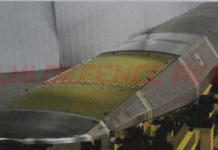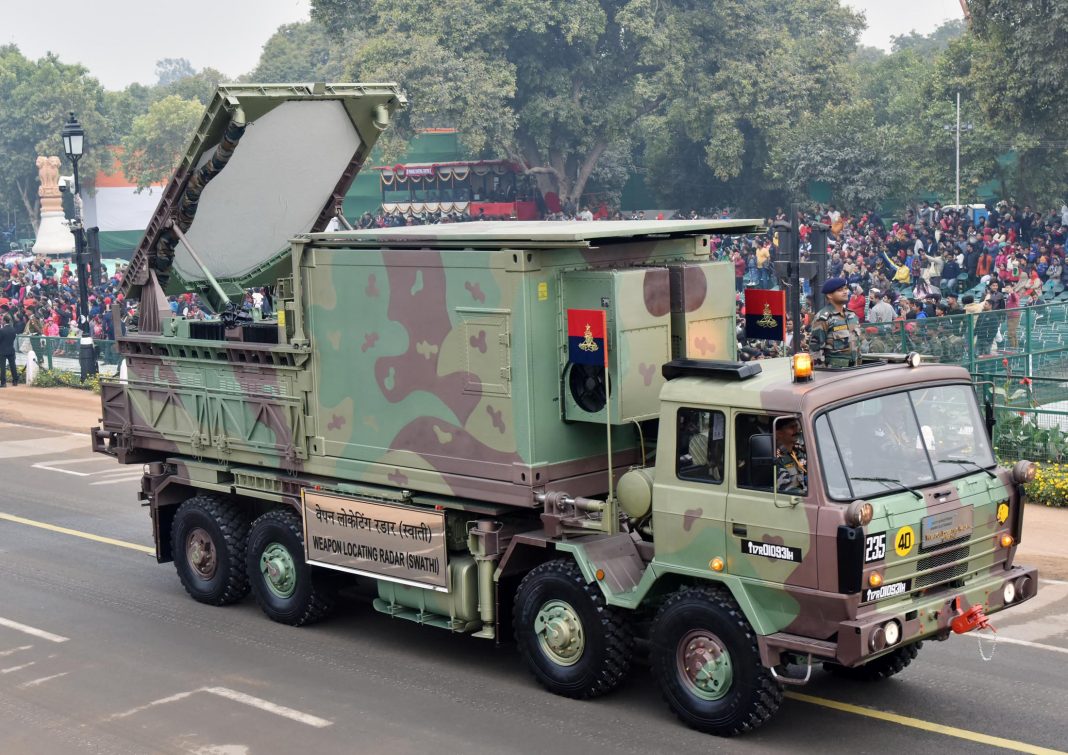In March 2020, India and Armenia signed a deal for the sale of four Swathi weapon locating radar (WLR) stations. This deal, worth $40 million was the first of its kind with Armenia, and stands out because vendors from Russia and Poland were also in the running.
A WLR is designed to detect the trajectory of an artillery shell. Using the detected path, one can narrow down on an enemy artillery fire base, and direct return fire to successfully destroy it. The Swathi WLR has been designed by the Defence Research and Development Organization’s (DRDO) Electronics Research and Development Establishment (LRDE) laboratory and produced by Bharat Electronics Limited (BEL).
Here’s an interesting fact – the Swathi WLR is a derivative of the fire-control radar system used on board an Akash surface-to-air missile. While testing the missile, engineers observed that the Akash’s FCR (called the Rajendra radar) could also track artillery shells being fired in a range nearby, and therefore used the same design while developing the Swathi.

Here’s all you need to know
- The first working prototype was ready in 2004 as part of an INR 20 crore contract issued by the Ministry of Defense in 2002.
- In 2008, the Ministry of Defense ordered 30 Swathi WLRs as part of an INR 1,600 crore contract signed with the Defense Research and Development Organization & Bharat Electronics Limited.
- The radar array is designed to detect and track incoming artillery rounds, mortar rockets and the launchers
- It can also provide fire correction by tracking friendly counter-battery fire
- Large calibre artillery rounds (105 mm & 155mm) can be tracked from a distance of 30km.
- The WLR utilizes a C-Band radar with a frequency range of between 4 – 8 GHz and a wavelength span of 3.75 and 7.5 cm
- The radar is mounted on an 8-wheeled Tatra truck, a vehicle that has multiple uses in various departments of Indian defence forces.
- The Swathi WLR is a passive electronically-scanned array radar, which means that the beam can automatically lock on to a target without having to move the transmitter.
- The transmitter/receiver is fixed, and so is the antenna.
- The Swathi WLR has an azimuth range (rotation around a vertical axis) of -45 to +45 degrees, and an up-down slew-able range of -135 to +135 degrees.
- The radar can track rounds fired at both low and high angles, and at all aspect angles – from behind or towards the radar, or at an oblique angle to the array.
- This change in direction takes only 30 seconds, because it’s done electronically.
- The radar is of a coherent type, which helps clear out the background clutter (trees, buildings etc are not tracked).
- This capability is achieved via the CFAR (Constant False Alarm Rate) which sets a threshold for how weak or strong a received signal should be, thereby reducing the risk of a false alarm.
- The resolution of the signals is improved using pulse compression.
- The high-power signals are generated with the help of a Travelling Wave Tube, which is an oscillator with protection from power surge and integrated cooling systems.
- The Swathi Weapons Locating Radar can operate between temperatures of -20 and +55 degrees.
- The on-board map can store a map spanning 100 x 100 km, with locations of up to 99 tracked targets.
- Up to 7 targets can be tracked simultaneously.
- The radar is designed to be fully operational within 30 minutes from being set-up.
- Interestingly, while designing a copy of the AN/TPQ-37, the Chinese noticed that the radar’s accuracy went down in hot and humid conditions,
- This became worse when operating in a coastal region or in an area prone to heavy showers in the monsoons.
- Another limitation of the AN/TPQ-37 was that it had a difficulty tracking shells following a flat trajectory.
- Compared to the Raytheon-built AN/TPQ 36-37 series, the Swathi WLR can operate at a much higher altitude of 16,000 feet, making it perfect for deployment in the LOC and the LAC.
Adreesh Ghoshal is an automobile engineer with a deep interest in defence technology. He lives in Mumbai
© Delhi Defence Review. Reproducing this content in full without permission is prohibited.
































